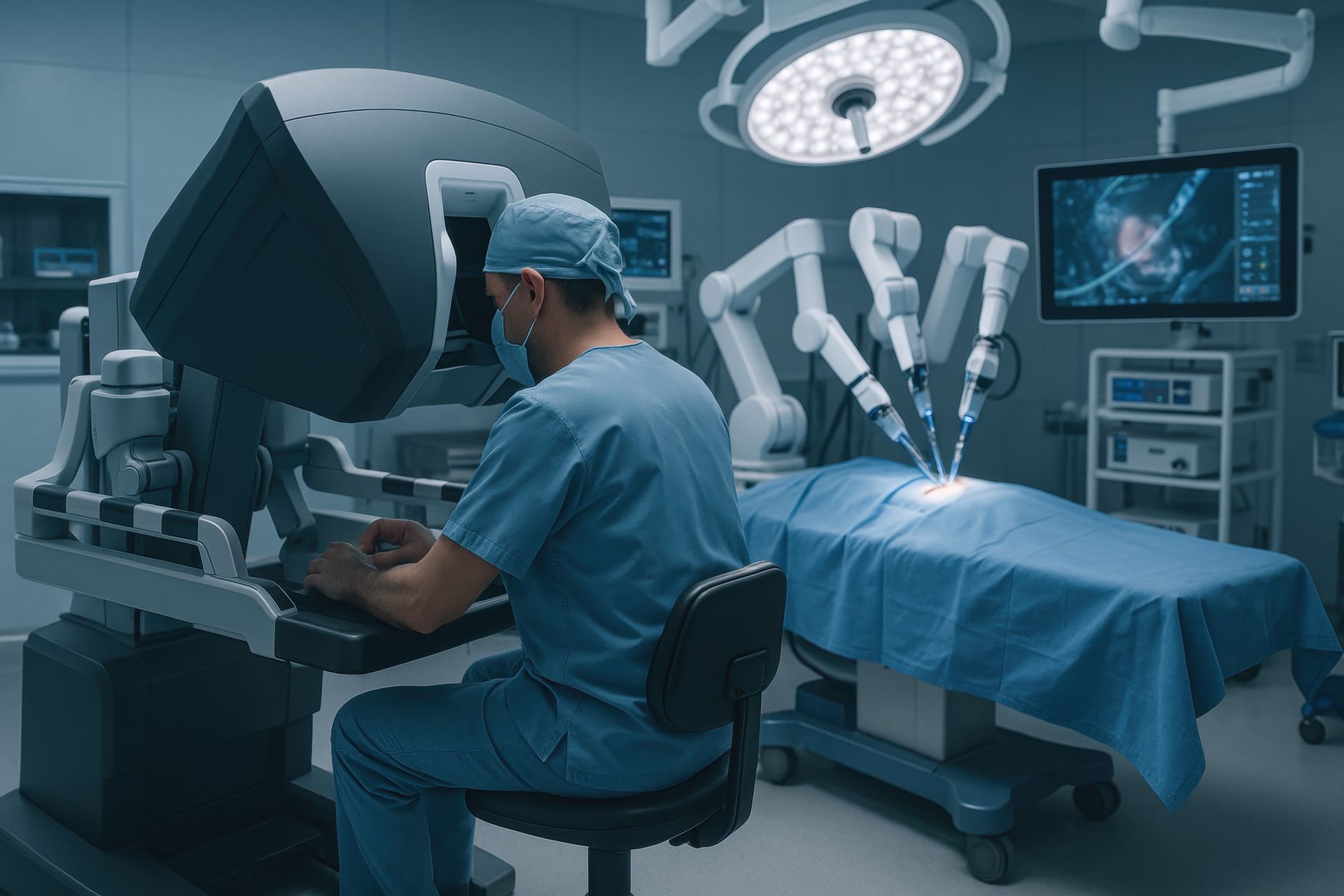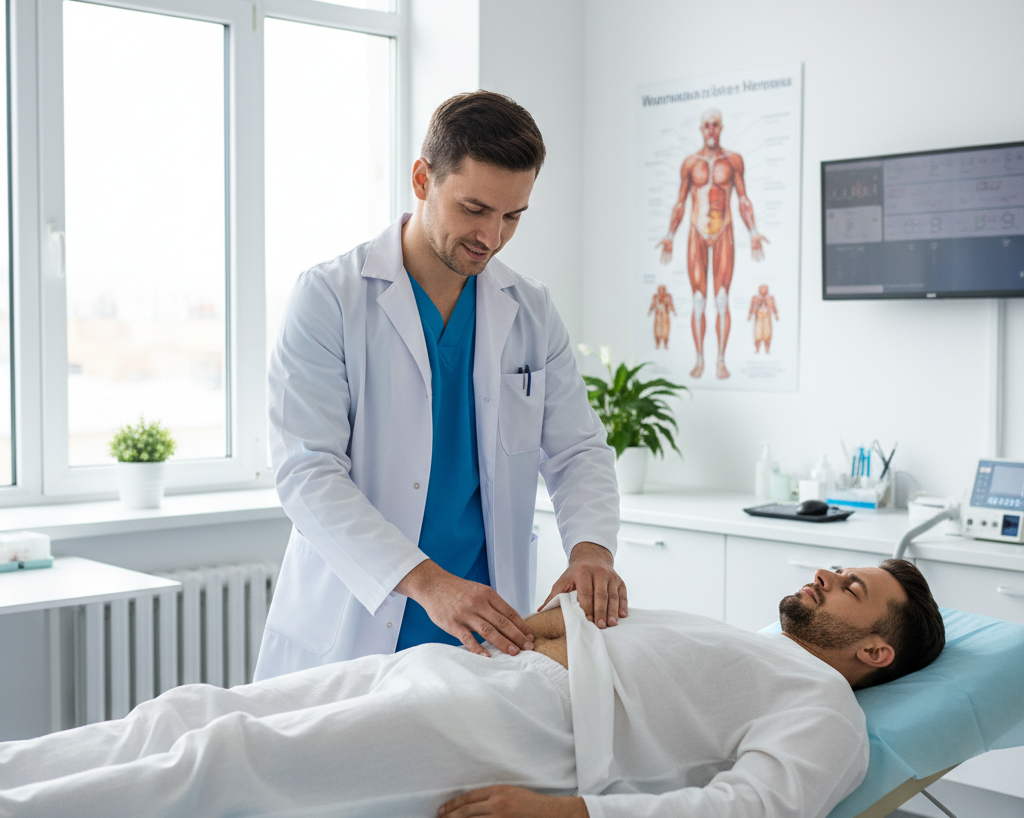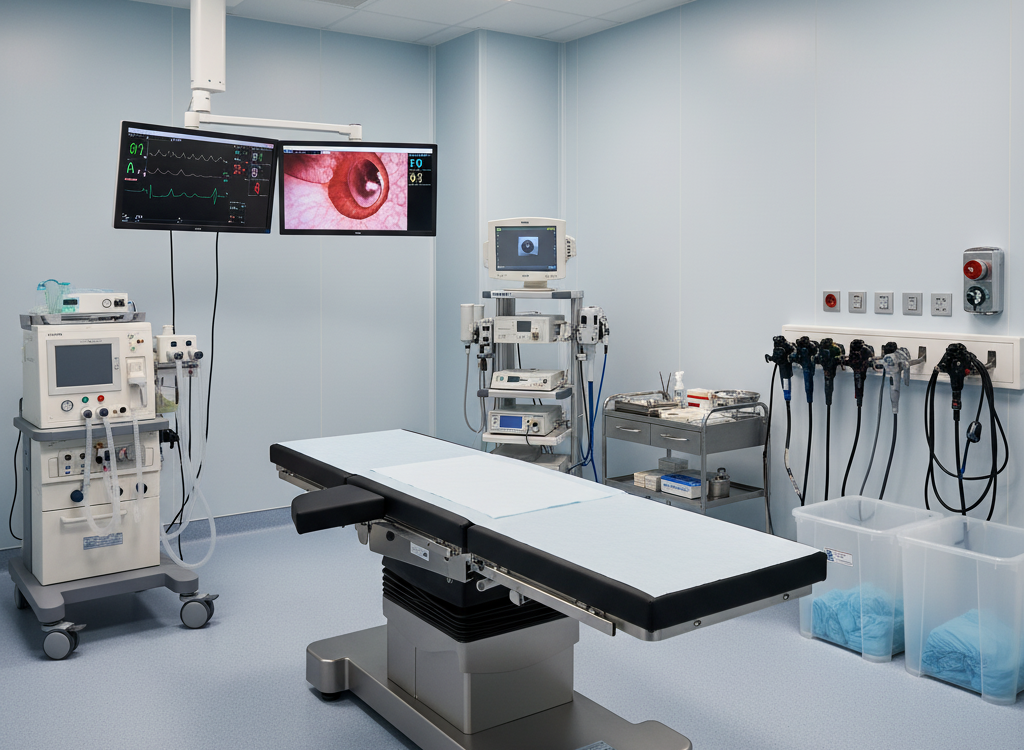How Robotic Hernia Surgery Is Transforming Hernia Repair

Robotic surgery is changing how people get hernia repair done. By using a minimally invasive technique, doctors can fix hernias with smaller incisions. That means there is less pain and a much faster recovery for patients. At Copper Mountain Surgical, these new tools and methods help doctors give people better results and raise the level of care. This blog will talk about how robotic hernia surgery has grown and why it offers big benefits. It shows why this new type of hernia surgery is so important for modern medicine.
Understanding Hernia Repair And Its Challenges
A hernia repair surgery happens when doctors move tissue back into place after it comes through a weak spot in the abdominal wall. They then make that area stronger so the problem does not come back. The surgery can help fix hernia issues, but there can be some problems based on the kind of hernia, how big it is, and where it is in the body.
For example, hernia surgery needs a doctor who knows what they are doing to lower the chance of the hernia coming back, infection, or hurting other tissue around the area. But new tools, like robotic surgery, are making many of these issues much better now and helping people heal faster and with good results.
Common Types Of Hernias Treated At Copper Mountain Surgical
Copper Mountain Surgical focuses on treating many types of hernias. Every hernia can need a different way to fix it. The most common kind is inguinal hernias. These happen when tissue from the stomach area moves through the abdominal wall near the groin. This kind of hernia comes up often in men. It can cause pain, and if you do not get help in time, there can be problems.
Incisional hernias are another type seen a lot. These show up near spots where someone had past surgery. If the connective tissue in that area is weak, the spot can tear. In this case, new surgery helps the area get strong again. Among the common risk factors for incisional hernias, a weakness in the abdominal wall can contribute significantly to the development of this condition.
There are other types of hernias like umbilical hernias. These show up near the belly button. Some, like flank hernias, are rare but also need care. Now, doctors use new methods like robotic hernia repair for many of these problems. With robotic hernia repairs, the doctor can do the work more exactly. This can lower the risk and give better results for healing. Knowing about types of hernias makes it easier for both patients and doctors to find the best hernia repair plans at Copper Mountain Surgical.
Traditional vs. Modern Approaches To Hernia Repair
The evolution of hernia repair techniques highlights major advancements in patient care. Traditionally, open surgery involved large incisions to repair the affected area, offering limited precision and slower recovery.
Modern options such as laparoscopic hernia surgery use smaller incisions and cameras to guide the repair process. However, the advent of robotic surgery has taken this innovation further, offering streamlined movement of robotic arms, enhanced vision, and improved outcomes.
| Traditional Open Surgery | Laparoscopic Surgery | Robotic Surgery |
|---|---|---|
| Large single incision | Multiple small incisions | Tiny, precise incisions |
| Longer healing time | Faster recovery | Shortest recovery duration |
| Higher risk of recurrence | Reduced recurrence possibilities | Lowest reported recurrence rates |
Compared to older methods, robotic repairs minimize scarring, lower infection risks, and shorten overall recovery times, making it the preferred choice for customized hernia repair.
Introduction To Robotic Surgery In Hernia Repair
Using new technology such as the da Vinci system, robotic hernia repair has become one of the top ways to do minimally invasive hernia surgery. With this way, surgeons use robotic arms and a video screen to fix the hernia. This helps them work with great accuracy and care.
There is more accuracy in robotic hernia repair, so patients often get better results. It gives clear benefits when compared to older and laparoscopic hernia repairs. As the technology keeps getting better, robotic surgery at Copper Mountain Surgical gives people hope for safer and more comfortable ways to treat both simple and more difficult hernia cases.
What Is Robotic-Assisted Hernia Surgery?
Robotic-assisted hernia surgery, including robotic inguinal hernia repairs, uses both the skill of a surgeon and the precision of a machine. The procedure is done using small incisions. The patient is put under general anesthesia. The surgeon sits at a console and uses robotic arms and special surgical instruments to fix the hernia. The robotic arms can make smaller and more careful moves than the human hand.
Unlike the old way of doing hernia surgery, this new method gives the surgeon a 3D view of the abdomen. This helps make the surgical procedure more accurate, even in hard-to-reach places. The robotic system makes connecting, cutting, and sewing easier in tight spaces.
The whole process uses 3–4 small incisions in the stomach. The camera and surgical tools go through these small incisions. The surgeon controls everything from a distance to push the hernia back, repair weak spots, and put in meshes if needed. This offers high precision during hernia surgery and also lowers the chances of problems after the operation.
Key Advantages Over Conventional Techniques
One great thing about robotic-assisted hernia surgery is how accurate it is. There are a few big upsides to this, like:
- Smaller incisions, so there is less obvious scarring.
- Reduced pain, which lets you have a smoother recovery.
- Shorter hospital stay, so you can often go home on the same day.
- Better results with this gentle method, which means there is less chance the hernia will come back.
If you compare this to open surgery, the robotic technique is better at not harming the areas around the hernia. This means there are not as many problems after the operation, like infections. It also lowers the chance of other issues. The improved view and better control with this method help people do well, even if their hernia is tough to fix. With new things like this in robotic hernia repair, the way doctors help patients keeps getting better. The steps are taken to make sure hernia repair is safer and faster for everyone.
The Robotic Surgical Experience At Copper Mountain Surgical
At Copper Mountain Surgical, the people who come in for care use top facilities designed for robotic hernia repair. The modern operating room has the latest tools and machines, so doctors can work with more care and keep safety first.
You will find a team of skilled healthcare providers who want you to have the best time here. They look after your needs from your first meeting until after your surgery. From your first talk to when you are healing, Copper Mountain gives great results using robotic precision. They make sure that everyone can use the newest and best minimally invasive technology for their hernia repair.
How The Robotic System Works During Hernia Procedures
The robotic system used at Copper Mountain Surgical is very advanced. During the surgical procedure, the surgeon sits at a control desk and guides the robotic arms. These arms are made to work like the human hand.
The surgeon can see the abdominal wall very clearly because of sharp, three-dimensional images. This helps them fix hernias in a good and correct way, especially in cases of medical emergency. The tools go into the body through smaller incisions. The hernia is moved back into place and made stronger. Surgeons can stitch or put in mesh with a skilled touch, so the repair lasts a long time.
This way of using robots helps cut down on mistakes and brings good results for different types of hernias, both simple and hard to fix. The robotic setup mixes new technology and expert help to give the best results.
The Role Of The Surgical Team And Technology Integration
A strong surgical team is the key to making robotic hernia surgeries go well. The surgeon sits at a robotic console to control the robot, while the others help with moving the patient and watching the tools in the operating room.
Using top technology helps the group shape every step to fit what each patient needs. Things like the patient characteristics, including the body mass index (BMI), the size of the hernia or any past issues, are checked to plan the best way to do the surgery. Nurses and anesthesiologists work together so that people stay safe during general anesthesia.
Technology gives direct feedback, so the team can make quick changes in the important parts of the surgery. When robotic hernia care blends these new tools and great teamwork, Copper Mountain can give good results for every patient.
Benefits Of Robotic Hernia Repair For Patients
Patients who have robotic hernia repair at Copper Mountain Surgical can get back to their normal life more quickly. This way of hernia repair usually means less pain and less time for healing, so you can start your daily routine sooner. People notice a real lift in their quality of life after this kind of care.
Also, because the robotic system is very exact, there are fewer problems. People get results that last for a long time. This method also means less time in the hospital and reduces the length of hospital stay, along with fewer hard moments after surgery. It helps doctors and patients go past the old limits that the usual ways of doing this surgery used to have, making the robotic hernia repair a good choice for many.
Reduced Pain And Faster Recovery Times
One big advantage of robotic hernia repairs is that there is less pain after surgery. It does not cause as much damage to the tissue as open procedures do. This means people feel less sore in the short term and start to heal more quickly.
With robotic hernia surgery, people can usually go home the same day. The recovery time is faster, which helps those who do tough, physical jobs. The way this surgery is done also means you are less likely to get chronic pain later on, which is a problem with some older ways of fixing complex hernia repairs.
Robotic methods focus on keeping people comfortable and moving. This changes how we think about getting better after surgery. Explore Robotic Hernia Surgery: Faster Recovery Explained for more information.
Enhanced Precision And Lower Risk Of Complications
Thanks to robotic precision, hernia surgery is now much safer than before. The surgeons get a clear 3D view of the area, so they can do the work without hurting blood vessels or nearby organs.
Because of this control, there is a much lower chance of wound infections or too much bleeding after surgery. Also, the use of robotic arms means the cuts made are smaller. This helps people heal better and with less scarring. In old surgical ways, there is more risk of complications, including deep vein thrombosis, since doctors cannot reach all spots as easily.
The robotic technique helps lower the risk of problems, making the long-term results better for patients.
Conclusion
Robotic surgery is changing the way hernia repair is done at Copper Mountain Surgical. This new technology gives patients less pain, quicker healing, and better accuracy during the surgery. It also solves many problems that come with old ways of treating hernias. People see better results, so they can get back to their normal lives sooner and feel safer, too. If you want to find out how robotic surgery and hernia repair can help you,
contact our team today. We can give you answers and help you make the right choice for your health.




